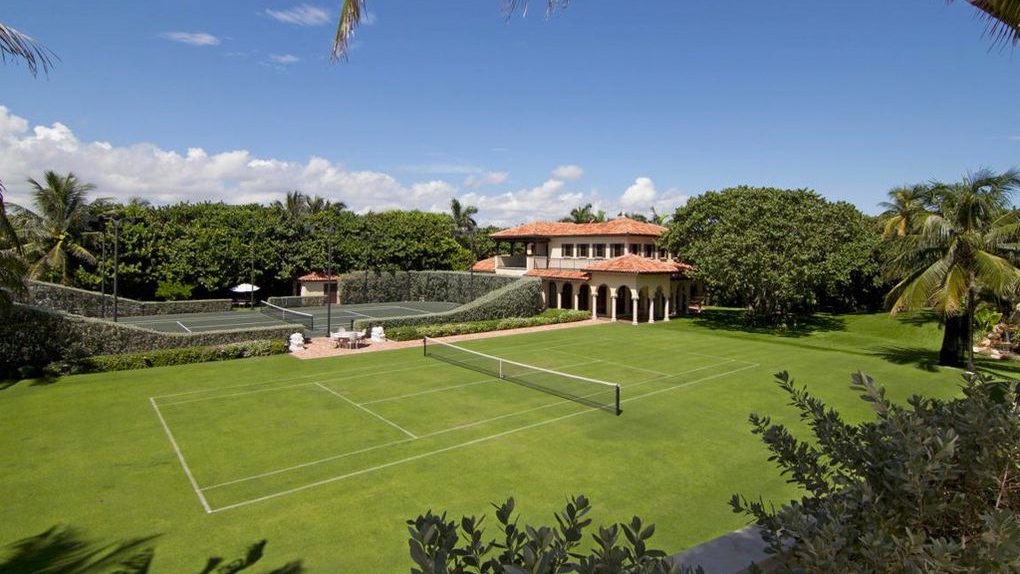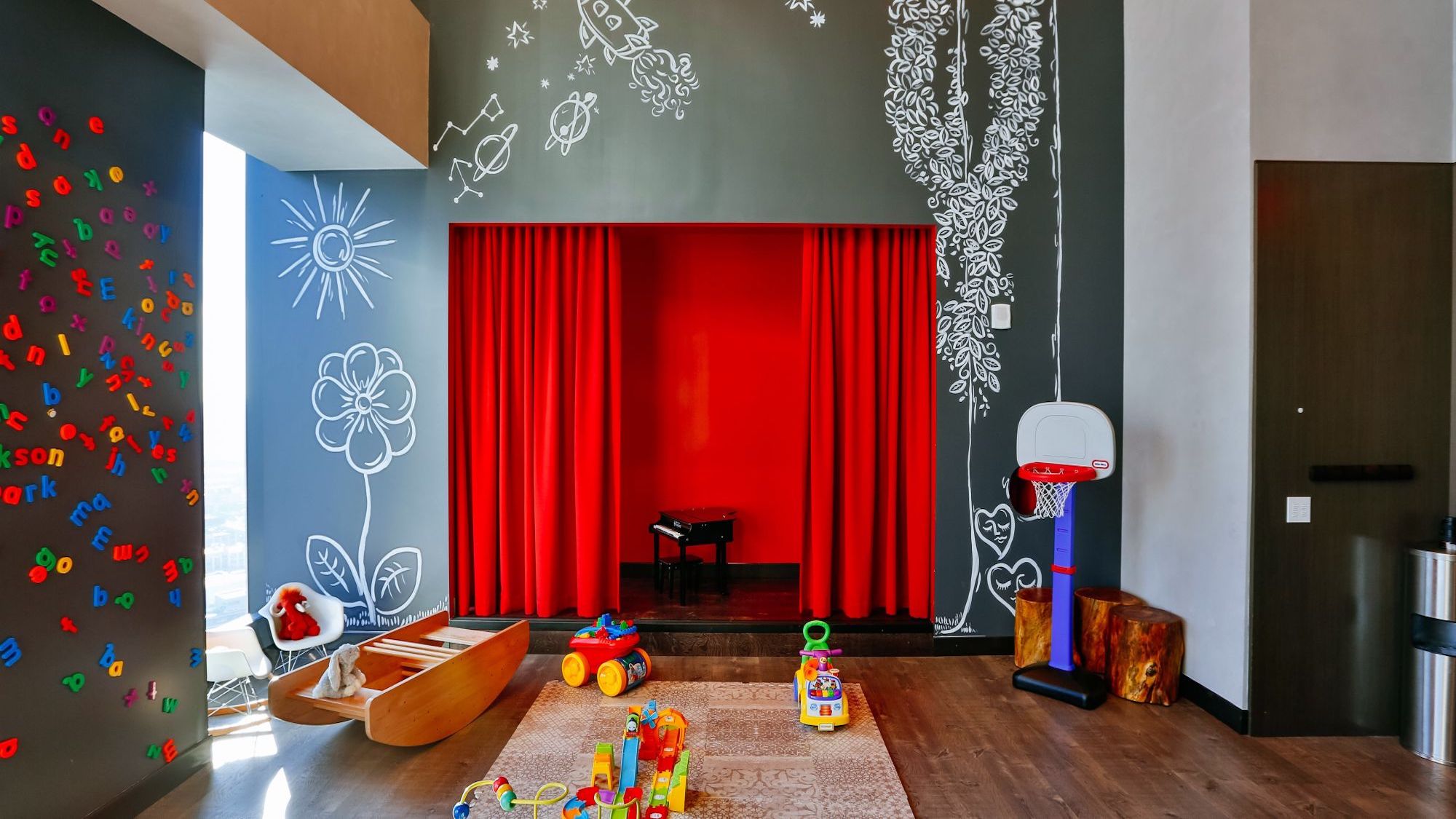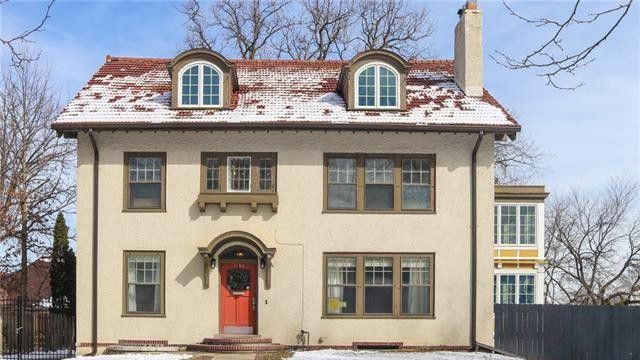
iStock; realtor.com
It’s one of the (many) high-stakes gambles of homeownership: that awesome new feature or design improvement you’ve been wishin’ and hopin’ (and of course savin’ for) to add for your family might ultimately hurt, not help, your place’s resale value. After all, times and tastes change, and eventually most homeowners will become home sellers. So how do you know that today’s sleek, new quartz countertop won’t become tomorrow’s eye-scorching popcorn ceiling on the open market?
Relax, we’re here to help you suss it out. Realtor.com®’s data team searched to find the home features that can help folks sell their home the fastest—and for the best price. We narrowed our list to the items found in homes with the highest list prices that went under contract the fastest. It’s a high-value sweet spot.
There’s plenty on the line here. Homeowners spent more on upgrading their homes in 2017 than in any year since 2006, according to the most recent Joint Center for Housing Studies of Harvard University study—an average $12,361 in discretionary spending. Much of that went into upgrading kitchens and bathrooms, the top room remodels, according to home design website Houzz.
“Anytime a buyer can walk into a house and see it already has the features they want, that’s a huge bonus for the seller,” says Anna Maria Mannarino, who runs her eponymous interior design firm in Holmdel, NJ. “If buyers feel they need to add key features or designs, they’re going to calculate how much it will cost and then lower their bid.”
To figure out the top home features, we dug through more than a million single-family home listings on realtor.com in February. We calculated a median price and days on market for each abode with one or more of the 70 popular features we evaluated for this ranking. Features in homes that took longer than 84 days to sell, the national median, were cut from our list. We also eliminated amenities, such as high ceilings, that are difficult—and expensive—remodels.
So what are the most profitable home features for sellers hoping to close quickly? Here are the big 15:
- Chef’s kitchen/gourmet kitchen
- Theater room
- Home gym
- Three-car garage
- Solar panels
- Quartz counters
- Exterior lighting
- Tennis court
- Home office
- In-ground pool
- Mudroom
- Security system
- Fireplace
- Smart home features
- Walk-in closet
OK, let’s take a closer look at trends that could help you make bank when it comes time to cash in and sell your home.
Kitchen makeovers bring in the dough

Kitchen
Tony Frenzel
Once upon a time (say, when you were growing up), most kitchens were drab, unsexy spaces that folks didn’t spend much time in beyond preparing and consuming dinner. But as the open kitchen trend has exploded, they’ve become centerpieces of the home—way more visible, personalized, luxurious, and important to buyers. Homeowners have upgraded to chef’s and gourmet kitchens (No. 1 on our list), making them glamorous showpieces where they can entertain their friends.
These days, trendsetters are choosing dark and moody color palettes, like black and navy, over the more bland white, gray, and neutral shades. They’re opening the rooms to the outdoors by installing walls of windows or double doors that open to the yard. And open shelving (versus the classic kitchen cabinets) is gaining more traction.
“Even if you don’t consider yourself a big foodie or a master chef, higher-end kitchens have a huge appeal,” says Jamie Novak, a Los Angeles–based professional organizer and author of “Keep This Toss That.” She works with homeowners who are planning to stay put as well as those getting ready to list their properties. “When the appliances are pretty and functional, it’s a win-win.”
Homes with chef’s kitchens sell for a median $599,000—more than double the national median of $295,000. Chef’s kitchens generally feature an open layout big enough to accommodate plenty of cooks in the kitchen, a large island, a gas cook range built for larger, hotter flames, a Sub-Zero refrigerator and freezer, and multiple sinks and ovens. Popular brands include Viking ovens and ranges, Bosch appliances, and Kohler and Moen faucets and sinks.
The average kitchen overhaul cost $12,300, while major kitchen overhauls usually cost upward of $40,000, according to the Harvard University study.
“People look at a kitchen, and if they don’t like it—they’ll often pass on the house,” says Lori Wellman, owner of Lincoln Cabinet, a Lincoln, NE–based remodeler.
Quartz counters (No. 6) are also in high demand. The engineered variety (a fancy word for enhanced) doesn’t chip as easily as the natural kind, doesn’t require much upkeep, and is difficult to stain or damage. Plus there are hundreds of colors, patterns, and textures to choose from.
It was the material of choice for home renovators, rising from a 41% market share in 2017 to 48% in 2019, according to Houzz data.
“[Engineered] quartz is a very, very versatile material,” says Nino Sitchinava, the site’s principal economist. “You can control palettes and colors and textures really, really well.”
Specialty rooms: Why go out when you can stay in?

Rooms
Tony Frenzel
Properties with dedicated specialty rooms, like theater rooms (No. 2) and home gyms (No. 3), showed up in only a small percentage of listings (1.5% and 1.1% respectively). And while they’re not as popular as they once were, say design experts, homes that come equipped with such rooms sell for about twice as much as the national median of $295,000. They’re fun to enjoy, too!
“At the high end there’s real cachet in having those specialized spaces,” says Jenni Lantz, manager of DesignLens, a design resource for developers, builders, architects, and interior designers. “Of course you need to have the space for them.”
Folks without big bank accounts can also create these spaces on a shoestring, DIY budget. Dark basements can become theater rooms, for example, with the addition of an oversize screen, wireless speakers, and a comfy couch. Popcorn makers are a bonus!
Unlike theater rooms and gyms, mudrooms (No. 11) have been gaining in popularity in recent years, say design experts. These small rooms are where coats and dirty shoes are kept are typically located toward the front of homes, and more homeowners are retrofitting them into their abodes. They’re becoming more stylish with rustic, wood benches to store those muddy boots under and fancy coat racks.
“Mudrooms are a fantastic transition from an outdoor space to your indoor living [space],” says organizer Novak.
They cost an average $12,000 to install, according to Fixr, a company that connects owners to home-related services.
Home offices (No. 9) have also become increasingly sought-after as more people work remotely or go freelance. The key is natural lighting, perhaps a window view for the desk, and doors that can shut out the clamor of the kids playing in other parts of the home.
Outdoor features are in

Outdoor features
Tony Frenzel
The trend today may be all about indoor-outdoor living. But it wasn’t beautifully inlaid patios, outdoor kitchens complete with pizza ovens, or trickling fountains that came out on top for outdoor features. That honor went to three-car garages (No. 4).
“Americans love their garages,” says Rick Foster, a managing broker and license partner at Engel & Völkers Annapolis, in Maryland. He’s sold more than 10,000 homes during his career and has seen buyer preferences change with the times.
Buyers aren’t just looking for a place to park their cars. “Having extra storage space is a big benefit,” adds Foster.
Certainly prestige comes into play—for many, bigger is indeed better. But unlike some outdoor features, this one is difficult and costly to add after the fact. Buyers want one already in place.
Other popular outdoor features on our list include solar panels (No. 5), tennis courts (No. 8), and in-ground pools (No. 10).
Solar panels are hot (yes, really) thanks to demand from both climate-conscious buyers and those simply hoping to cut down on their electricity bills. Homes with these features sell the fastest of all of the amenities on our list, at a median 51 days. About 2% more homeowners undergoing remodels have been installing them each year from 2015 to 2017, according to Houzz data.
But be warned: They’re not cheap. Installing a 5-kilowatt system, the standard system of about 20 panels, costs around $25,000 to $35,000, according to https://ift.tt/1VRVXo9.
“Solar is a very regional preference,” says Sitchinava of Houzz. They’re particularly appealing in places that get a lot of sunshine but have high AC bills, such as California, Arizona, and Texas. “The long-term payoff is pretty phenomenal.”
Tennis courts are also appealing, but they can set homeowners back more than $50,000, according to Quality Court Industries, a tennis court construction firm that operates throughout the Southeast.
Even having a shared court open to residents of a community can boost property values. The same goes for in-ground pools, which can be private or shared as well.
Built-in pools are polarizing features in some parts of the country—attracting some buyers while repelling others due to maintenance or liability issues. The cardinal rule for this feature: Install it for your own enjoyment first, resale value second.
“They’re consistently popular,” particularly in warm-weather areas, says design expert Lantz. “People still like to lay out by the pool.”
Smart home features and other electronics can pay off

Smart home features
Tony Frenzel
Smart home technology (No. 14) is a catchy umbrella term people use to describe everything from a few interconnected appliances or internet-controlled thermostats to fully wired homes. The expensive, built-in approach has waned a bit, but the more ad hoc approach is booming, thanks to smart devices that can be used as simple control centers, like Amazon Echo and Google Home.
“The convenience is unparalleled, and the technology is getting so easy to use,” says organizer Novak.
Security systems (no. 12), often smart ones integrated with mobile and other devices, are gaining traction as must-have features. Just 10% of homeowners undergoing remodels had a security system installed in 2015, according to Houzz data. By 2017, about 15% did.
Folks used to have to hire a security company to come in, assess the property, and then install a system that could run anywhere from $600 to more than $1,000. And that doesn’t include the monthly monitoring fees. Now, homeowners can pick up a simple, smart home security system from companies like Ring for around $150.
“People really like having an app on your phone and knowing if someone’s at your home and being able to speak to them,” says Craig Grant, CEO of the Real Estate Technology Institute, an online portal where folks can learn about real estate technology.
These classic indoor amenities have lasting appeal—and a new spin

Indoor features
Tony Frenzel
Some things never go out of style. Fireplaces remain a highly sought-after amenity, although today’s sleek, electronic models don’t have much in common with the ashy traditional hearths. These newer fireplaces are often installed right into wall.
“No matter where your home might be, fireplaces are always welcome,” says Nancy Fire, the design and trend forecasting expert behind the HGTV HOME brand.
Other timeless features that boost home values are spacious, walk-in closets. Sometimes folks will even tear down an adjacent bedroom to build that massive closet with floor-to-ceiling shoe and accessory walls, a ladder to store and fetch rarely used items, and seating to make it easier for friends and family to share their outfit opinions, says remodeler Wellman.
Walk-in closets, while still popular, aren’t as in-demand as they used to be—and the decluttering movement (and its guru Marie Kondo) can partly be blamed.
“If you’re trying to pare down your clothing, then you don’t want a big walk-in closet to fill,” says Novak, whose clients prefer smaller, sliding-door closets. “It just becomes a big mess.”
Clare Trapasso and Rachel Stults contributed to this report.
The post Top 15 Home Features That Will Sell Your Home Fast—and for More Cash appeared first on Real Estate News & Insights | realtor.com®.
from DIYS https://ift.tt/2HvCSrv





 Hindered by a lack of affordability, Boston ranks toward the bottom of the pack when it comes to major metropolitan areas suited for first-time homebuyers. Boston was ranked No. 33 on the list by Bankrate, a consumer financial services company, which was based on FBI crime reporting data, the Gallup-Sharecare Wellbeing Index, U.S. Census Bureau and Realtor.com, among others. A study of best metros for first-time homebuyers puts Pittsburgh at No. 1. The next four on the list were Raleigh, North…
Hindered by a lack of affordability, Boston ranks toward the bottom of the pack when it comes to major metropolitan areas suited for first-time homebuyers. Boston was ranked No. 33 on the list by Bankrate, a consumer financial services company, which was based on FBI crime reporting data, the Gallup-Sharecare Wellbeing Index, U.S. Census Bureau and Realtor.com, among others. A study of best metros for first-time homebuyers puts Pittsburgh at No. 1. The next four on the list were Raleigh, North…